Discover Not Real Art
Not Real Art

Not Real Art
Author: Crewest Studio
Subscribed: 22Played: 1,014Subscribe
Share
© All rights reserved
Description
The NOT REAL ART podcast celebrates creative culture and the artists who make it. NOT REAL ART is fresh, fun and inspiring. It contains material not suitable for pretentious art snobs. Guests include the world-class artists, designers and creatives who drive the $2T creative economy.
NOT REAL ART is hosted by L.A. based art world insiders Man One and Sourdough who bring their devil-may-care attitude to discussing their mutual love — and hate — for the contemporary art world, creative culture, and everything in between.
If you're an an arts professional or creative culture enthusiast, NOT REAL ART is for you!
NOT REAL ART is hosted by L.A. based art world insiders Man One and Sourdough who bring their devil-may-care attitude to discussing their mutual love — and hate — for the contemporary art world, creative culture, and everything in between.
If you're an an arts professional or creative culture enthusiast, NOT REAL ART is for you!
333 Episodes
Reverse
On today's episode, we're diving into a wild and totally unexpected topic: the intersection of art and adult entertainment, sparked by a hilarious story about our own "Not Real Art" sticker showing up in a porno scene. Yep, you heard that right! We will explore the quirky synchronicity of how our little brand made its way into a billion-dollar industry and forces the question: is pornography not real art? So grab your favorite beverage, kick back, and let's talk porno!
Artist and podcaster Tyler Ramsey joins us today to dive into the vibrant world of creativity and the power of choice in happiness. In this episode, we explore how Tyler transitioned from a chaotic career in Hollywood to a fulfilling life as a visual artist, emphasizing that being happy is a conscious choice we all can make, even when life throws its curveballs. We chat about his unique artistic process, from finger painting to using multimedia elements like wood and neon, and how his experiences in recovery have shaped his art and outlook on life. Expect a fun and insightful conversation filled with humor, anecdotes, and a whole lot of heart as we navigate the intersection of art, authenticity, and personal growth. Links referenced in this episode:notrealart.compainfullessons.comadoptogether.org
Buckle up, folks, because today's episode of Not Real Art is a real eye-opener! Our beloved host Sourdough is back, and he’s dishing out some spicy takes on why the art market appears to be hitting a rough patch. With a blend of playful humor and serious analysis, he dives into the current state of galleries closing their doors and sales figures that are making everyone a bit jittery. What’s the deal? Sourdough proposes that we’re witnessing a fundamental shift as the baton is passed from the boomer generation to the millennials. This isn’t just a passing trend; it’s a cultural shift that’s reshaping the very fabric of the art world.As he navigates through the conversation, Sourdough highlights that millennials are not just inheriting a market built on the boomer’s dreams; they’re actively rejecting it in favor of their own creative expressions. They’re proving that you don’t need to drop stacks of cash on a piece of art to appreciate it or to have a meaningful connection with it. This generation is all about supporting local artists and finding joy in affordable pieces that resonate with their personal tastes. It’s a refreshing perspective that challenges the traditional notions of art as an elitist pursuit reserved for the wealthy.Sourdough doesn’t shy away from calling out the stagnation in the art market—he points out that the same old models are no longer serving the majority of artists or buyers. With a lack of innovation and a failure to engage younger audiences, the art world risks becoming obsolete. He urges a reevaluation of how we connect artists with buyers, especially at the entry level, where most people are still dipping their toes into the world of art. With humor and heart, this episode invites listeners to rethink their relationship with art and to embrace a future that is more inclusive, innovative, and vibrant. So grab your headphones and get ready to rethink everything you knew about the art market!Takeaways: The Not Real Art podcast is all about celebrating creative culture and fresh ideas, aimed at inspiring listeners to appreciate art beyond the traditional boundaries. We're tackling the big question of why the art market is crashing, diving into how economic cycles and political uncertainty are reshaping the landscape. Millennials are shaking things up by rejecting the expensive art market of their boomer predecessors, opting for art that resonates with them personally rather than just what’s deemed valuable. The podcast highlights a seismic demographic shift as millennials and younger generations become the new driving force in the art world, leaving behind the old models. In a world where boomers are aging out, the art market faces a fundamental transformation because millennials and Gen Z aren’t buying into the old ways of doing things. We discuss the lack of innovation in the art market over the past decades, emphasizing the importance of attracting new buyers and fresh ideas to keep the industry alive. Links referenced in this episode:notrelart.comarterial.orgCompanies mentioned in this episode: Arterial Crewest Studio Not Real Art Parlor Social Captivate
Dim the lights, grab a cozy blanket and a mug of cider (or a pumpkin spice latte, if you prefer), and settle in for three tales of terror from our Art World Horror Stories series.First on the chopping block is Mellyssa Diggs, a brand identity designer whose passion for social justice quickly spiraled into a nightmare of cyberbullying and social media censorship. Next, we turn to Asheville-based artist Wendy Newman. Last fall, her life was upended by Hurricane Helene, which not only obliterated her gallery but also displaced countless artists in her community. Finally, we meet painter Jacobina Oele, another Asheville artist, whose masterpiece was mangled beyond recognition at the hands of an unscrupulous gallery owner. Presented by NOT REAL ART’s parent company, Crewest Studio, Art World Horror Stories is a podcast about bad things that happen to good artists. In today’s crossover episode, we delve into the spine-chilling stories usually reserved for the spookiest podcast in Crewest’s network.How You Can Get InvolvedListen: 5 Practical Tips From 30 Years of Art World HorrorListen: Muralist Amandalynn Took a Great FallVisit the Art World Horror Stories website.Visit Mellyssa Diggs on Instagram, LinkedIn, or YouTube.Visit Wendy Newman on Instagram, Facebook, or Pinterest.Visit Jacobina Oele on Instagram, Facebook, or YouTube.Learn more about Crewest Studio and our host, Scott “Sourdough” Power.Submit a horror story for 2026.About Art World Horror Stories and Crewest Studio Art World Horror Stories is a podcast about bad things that happen to good artists. The series is produced by Crewest Studio, an independent company specializing in entertainment media, publishing, and experiential content, serving a diverse network of professional creatives and enthusiasts. With a mission to entertain, inform, and inspire, the studio recognizes the significance of the $2 trillion creative economy and the 30 million professionals within it. At the helm are co-founders Scott "Sourdough" Power, a seasoned leader with decades of experience, and Man One, a passionate...
On May 3, hundreds of arts organizations across the US opened their inboxes to an abrupt notice: their NEA grant applications had either been denied or rescinded. Among them, Art21, the New York nonprofit that produces the beloved public television series Art in the Twenty-First Century, lost an $85,000 grant to support the production of seasons 12 and 13.In today’s episode, host Scott "Sourdough" Power sits down with Lolita Fierro, Director of Development at Art21, to discuss the triumphant premiere of Season 12 (Oct.17), despite executive orders defunding the NEA and the Corporation for Public Broadcasting earlier this year. Together, they unpack the season’s first episode, “Between Worlds,” which features artists whose practices explore the space between the self and the other, reflect on histories of migration, borders, and displacement, incorporate knowledge across disciplines, and create human connections across difference.Together, Scott and Lolita Unpack…The upcoming premiere of Art in the Twenty-First Century, Season 12, on Oct. 17, 2025Art21’s new social-first series, IRL, focusing on artists working in both online and offline spacesThe second biannual film festival in New York, which included premieres, panel discussions, and behind-the-scenes insightsWhy Art21 is an essential educational resource that supports teachers and lifelong learnersThe challenges and rewards of securing support for nonprofit art organizationsThe concept of art as “soul food”—exploring its spiritual and philosophical significance beyond market value and investment How You Can Get Involved With Art21Watch the trailer for Season 12 of Art in the Twenty-First Century.Explore over 600 films with no paywall and global accessibility.Register to host an Art21 Screening Society screening event.Discover tools for educators.Watch Art21.live, an always-on broadcast channel featuring high-quality, hand-selected video programming on contemporary art and artists.Support Art21; donations of any size are meaningful.About Art21 and Lolita FierroArt21 is a leading nonprofit organization dedicated to expanding access to contemporary art through documentary films, educational resources, and public programs. With a mission to inspire a more creative and inclusive world, Art21 produces award-winning films that highlight groundbreaking contemporary artists. Its flagship PBS series, Art in the Twenty-First Century, along with digital shorts like "Extended Play" and "New York Close Up," engages millions of viewers worldwide. Art21 also offers free materials and professional development programs for educators and hosts community film screenings globally, making contemporary art accessible to all.Lolita Fierro, the Director of Development at Art21, plays a vital role in overseeing the organization’s annual operating budget and donor engagement strategies. Under her leadership, Art21 has launched its first gala, revitalized events programming, and strengthened its patron programs to connect supporters with artists and cultural communities. Fierro also spearheads "Art21 for Everyone," the organization’s inaugural
Throughout history, figures like Jane Goodall, Benjamin Franklin, and Leonardo da Vinci have stood out as polymaths—individuals driven by an insatiable thirst for knowledge and expertise across a multitude of fields. This week, we welcome Hans Fjellestad, a member of their esteemed ranks. A true Renaissance man, Hans's talents span music, film, and education.In our conversation, Hans walks us through his artistic evolution, starting with his classical piano background and progressing into the realm of experimental electronic compositions. Along the way, he shares stories from his experiences in documentary filmmaking, including insights from acclaimed projects such as Moog and a recent work centered on the sculptor Luis Bermudez.As Hans and Scott delve deeper into the conversation, they explore the roots of creativity, the fascinating interplay between music and language, and the chaotic beauty of performing live in front of an audience.For more information, please visit https://notrealart.com/hans-fjellestad
In this week’s episode, we take you behind the scenes of our recent adventure filming the pilot for Arthouse in Scott’s hometown of Chicago. From navigating the bustling urban landscape to dealing with unexpected equipment malfunctions, our journey was anything but straightforward. We even faced a COVID scare that threatened to disrupt our plans, but through teamwork and determination, we emerged victorious. The footage captured is truly stellar and a testament to our passion for this project.For more information, please visit https://notrealart.com/filming-arthouse-pilot
What is Digitalism—and why is it making waves in the art world? As award-winning filmmaker and curator Rebekah Tolley writes in her recent essay “The Rise of Digitalism: A New Movement in Art,” Digitalism explores the intersection of art, culture, and technology in the digital era. Today, Rebekah joins us to unpack the emergence of Digitalism as both a cultural movement and a groundbreaking exhibition that she curated for the British Art Fair in 2024. Throughout our discussion, Rebekah emphasizes the challenges digital artists face in gaining acceptance within the traditional art world, a struggle reminiscent of photography's early days. She advocates for accessibility and community, aiming to dispel myths and foster an inclusive environment for practitioners of Digitalism. As we look forward to the 2025 Digitalism showcase (Sept. 25 - 28, Saatchi Gallery), it’s clear this movement is more than a trend; it has the potential to redefine expression within the digital realm as we enter a new digital age. For more information, please visit https://notrealart.com/rebekah-tolley-digitalism
In this episode, we sit down with Chris Davies, a creative strategist and the visionary behind the groundbreaking platform, AskChris.AI. Designed specifically for artists and creatives, this innovative tool acts as a personal coach, providing thoughtful advice and support around the clock. Chris shares insights from his journey in the art world, detailing how his extensive experience shaped the development of Ask Chris AI. We explore the practical ways this platform assists artists, from crafting the perfect artist statement to navigating the complexities of gallery outreach. Chris emphasizes that while AI can serve as a valuable thought partner, it doesn’t replace the human touch essential to true artistry. Instead, it empowers artists to brainstorm ideas and work through creative blocks more effectively.Our conversation highlights the importance of leveraging technology to enhance creativity and streamline processes, freeing up valuable time for artists to focus on what they love most: making art. We also explore the vital role of community and collaboration in the creative process, reminding us that, even as technology evolves, the heart of creativity remains deeply human.For more information, please visit https://notrealart.com/ask-chris-AI
Step right up and prepare to peek behind the painted smiles, as today’s guest, professional clown Guilford Adams, reveals there's more to the profession than a big red nose. As the co-director of the feature-length documentary American Clown, Guilford joins us to discuss the film, which explores the plight of clowns in a country that increasingly views them with apprehension and disdain. Guilford traces his roots to his childhood church, where he discovered his love for magic and comedy. He recounts his evolution from a junior high clown to a professional performer, including his time with the Ronald McDonald program and how the clowning landscape has shifted over the years.Guilford discusses the challenges that clowns face today, particularly the stigma created by horror films and negative media portrayals. He reflects on how these representations affect his career and the wider clowning community, as highlighted in American Clown. Despite these hurdles, he emphasizes the resilience and creativity inherent in the clowning tradition. The conversation explores the diversity within clowning, highlighting different classifications of clowns from classic to modern specialties. Guilford underscores the importance of community among clowns, pointing out the supportive networks that exist despite the competitive nature of the industry.Guilford also shares how fatherhood has influenced his craft. As a dad to twin boys, he reveals how parenting has shaped his understanding of performance and deepened his empathy as an artist. This episode offers an insightful look into the art of clowning, illustrating how it goes beyond mere entertainment to foster connection and understanding in a complex world—themes that resonate throughout American Clown.For more information, please visit https://notrealart.com/american-clown
Pack an extra warm sweater because we’re headed to the Arctic Circle with David Scott, a multifaceted artist, writer, and close friend of our host, Scott “Sourdough” Power. In today’s episode, the two pals reminisce about their daring year spent living off-grid in a simple cabin near Churchill, Manitoba. This remarkable experience is detailed in David’s new book, Paradise Creek: A True Story of Adventure and Survival, where he recounts their unforgettable true story of stepping from a bush plane onto a frozen lake and struggling to find their cabin, just three miles away, after being lost for six bitterly cold days. David reflects on how the lessons they learned during this time shaped their diverging creative paths and contributed to their personal growth.Listeners are treated to a glimpse inside their longstanding friendship, as Scott and David think back to the thrilling days of building their cabin and navigating through the frigid cold, with only the stars as their compass. They share stories of hunting moose for winter meat and the joys and hardships of living in a wilderness log cabin, all while eliciting chuckles about their initial excitement and somewhat naive optimism while gearing up for the expedition. Throughout the conversation, they delve into the various artistic endeavors that emerged from their experiences, from writing poetry to crafting furniture, emphasizing the importance of creative expression and how it intertwines with their survival story.The episode also touches on the challenges of living in isolation, the beauty of the northern lights, and the thrill of hunting and fishing in the wild. With light-hearted banter and playful humor, the duo shares anecdotes that range from hilarious to harrowing, making for an entertaining listen that highlights the resilience of the human spirit and captures the essence of their year at Paradise Creek. Paradise Creek: A True Story of Adventure and Survival is available on Amazon.com. For more information, please visit https://notrealart.com/paradise-creek
In this week’s episode, host Scott “Sourdough” Power takes us on a personal journey into the world of brand loyalty through the lens of an unexpected favorite: The Ironman Triathlon Series. While many brands offer lifestyles, the Ironman brand epitomizes dedication and grit, offering experiences that are truly earned. Straying from the typical conversation around tech gadgets or luxury items, Scott shares why this brand resonates deeply with him, symbolizing endurance, community, and growth. He reflects on his experiences as a two-time Ironman finisher, sharing the challenges, triumphs, and the dedication it takes to complete such an intense competition. This episode captures not just the physical aspects of the race, but also the emotional rewards that come from pushing one’s limits. Throughout the episode, Scott explores what it means to have a favorite brand and how real commitment reflects in experiences rather than material possessions. He encourages listeners to find their own version of an “Ironman”—a challenge that fosters personal growth and a sense of achievement.For more information, please visit https://notrealart.com/my-favorite-brand
In today’s episode, Scott “Sourdough” Power discusses his decision not to attend Burning Man this year—an annual pilgrimage that has long been a cornerstone of his creative life. Known for its jaw-dropping installations and rebellious artistic spirit, the festival holds a special place in Scott's heart, particularly for the cherished memories made at Camp Corny, “the friendliest fucking camp in the universe.”As he explores the reasons behind his absence, Scott balances nostalgia with the realities of life. This year, his daughter’s milestone 13th birthday coincides with the festival, forcing him to weigh family commitments against the allure of the Playa. He candidly shares the bittersweet feelings that come with stepping away from an experience woven into the fabric of his identity.Scott also reflects on the evolution of Burning Man amid the rise of social media and technology, particularly the introduction of internet service provider Starlink. He questions the impact of these changes on the festival's essence and whether they dilute the very magic that draws so many to the desert. Finally, Scot considers what it means to dance to your own beat, even when the rhythm of life pulls in different directions. For more information, please visit https://notrealart.com/why-im-not-going-to-burning-man
In this week’s episode, host Scott "Sourdough" Power describes his recent 20th wedding anniversary celebration at the breathtaking Post Ranch Inn in Big Sur. Nestled among nature's grandeur, this luxe getaway highlights the seamless blend of architecture and the environment, thanks to the visionary work of designer Mickey Muennig.Scott paints a vivid picture of the stunning landscapes that envelop the Inn, where each view is a testament to the beauty of eco-minded design. Muennig’s unique approach to architecture at Post Ranch Inn embraces sustainability and fosters a deeper connection with the surrounding nature. Scott reflects on how this experience enriched his understanding of creativity and its role in harmonizing human life with the natural world.The episode is a delightful journey through joy, love, and reflection, as Scott shares personal anecdotes about his time spent there with his partner. Listeners will hear about the invigorating beauty of Big Sur and the enchanting allure of Post Ranch Inn, described as a luxurious treehouse suspended in time. Scott also explores broader themes of creativity and community in the arts, encouraging listeners to support and celebrate the artists that inspire us. With a dash of humor and whimsy, he invites everyone to join him in appreciating the interplay of love, nature, creativity, and architecture—reminding us all that life’s most precious moments are meant for sharing.For more information, please visit https://notrealart.com/architect-mickey-muennig
Today, host Scott “Sourdough” Power addresses a dilemma that many artists face: When is an artwork truly finished? This week’s episode encourages creators to rethink their perceptions of completion and offers three essential steps every artist should take to elevate their work.First and foremost, Scott emphasizes the critical importance of copyrighting artwork. Protecting your work is paramount in an environment where art theft is all too common. Next, he discusses the necessity of capturing high-resolution images of artwork. A stunning image showcases the piece in its best light and can also serve as a valuable asset in an artist's portfolio or promotion strategy.The final step Scott explores is cataloging. While it might seem mundane, properly documenting art ensures a lasting legacy and provides clarity for future generations. This episode invites listeners to envision their artistic journey as a series of works and a narrative that deserves preservation.With a blend of insightful commentary and lighthearted banter, Scott creates a comfortable space for seasoned artists and newcomers to reflect on their creative processes. Whether it’s about safeguarding intellectual property or enjoying a few laughs along the way, this episode is packed with valuable takeaways that inspire confidence and joy in every artistic endeavor. If you’ve ever found yourself staring at a piece of art, wondering if it’s truly finished, this episode is for you. For more information, please visit https://notrealart.com/finishing-your-artwork
Are you ready to transform the energy in your home? It might be simpler than you'd think. In our latest episode, we sit down with Dan Ubick, widely celebrated as DJ Constantine "Connie" Price. He explores the ways in which music shapes our environments and enriches our living spaces via the innovative Arthouse project.This unscripted television series follows everyday individuals as they interact with local artists, explore studios, and discover original artwork that resonates with them—all while keeping within their budget. As Arthouse continues its crowdfunding campaign, Dan unveils the exclusive playlists he’s curated for donors and explains how listeners can get involved to make a tangible impact. For just $30, backers will gain access to the official Arthouse music playlist titled "Chill," curated by Dan himself to boost creativity and relaxation. But that’s just the start—contributing $25 will secure a limited edition show poster, while a $30 contribution also allows you to nominate an artist or town to be featured in future Arthouse episodes. For those feeling particularly generous, higher-tier contributions open the door to exceptional experiences, such as a private piano performance by the acclaimed Steinway artist Ric'key Pageot for $2,500, or the chance to receive an Associate Producer credit and an invitation to the wrap party for a $10,000 donation. All contributions are tax-deductible and will directly support the filming of the Arthouse pilot episode, slated for this summer in Chicago. A longtime composer, producer, and record collector, Dan's insights into how music enhances the creative experience are both enlightening and refreshing. In our conversation, he also shares anecdotes from his treasure hunts in record stores, showcasing his eclectic taste and continuous quest for hidden gems that ignite his creativity. His passion highlights the importance of accessibility in the arts, as he articulates how Arthouse aims to link everyday people with local artists and original works—creating an artistic community that thrives on inclusivity.To learn more about Arthouse, support its mission, or nominate your favorite artist for future episodes, please visit Arthouse on Indiegogo. For more information, please visit https://notrealart.com/dan-ubick-arthouse-playlist
It’s no secret; there is an epidemic of loneliness in the United States. In recent years, about one in two Americans reported experiencing loneliness. Today, we welcome David Bosnak, the CEO of Attune Media Labs, an organization that combats loneliness and anxiety with empathetic AI companions that enhance human connections through state-of-the-art technology. David began his career as an electrical engineering undergraduate with a passion for storytelling, eventually moving to Los Angeles to pursue acting and writing. Blending his engineering background with his storytelling skills, David launched Attune Media Labs, where he now focuses on leveraging the power of emerging technologies. In an era of disconnection, David’s work emphasizes technology’s potential for positive social impact while tackling the challenges of building ethical boundaries in AI development, especially within the creative fields and copyright considerations. In today’s conversation, David shares insights from his recent book, AI for Your Real Life, a practical guide empowering readers to harness generative AI tools like ChatGPT in their everyday lives. In the book, David suggests that AI should be viewed as a tool that enhances creativity and problem-solving rather than a replacement for human ingenuity. He underscores the necessity of ongoing dialogue about AI ethics, particularly as technology continues to evolve and influence various industries. Our conversation is packed with insights, laughter, and a few puns—because, let’s face it, who doesn’t love a good dad joke to ease their anxiety?Listeners interested in receiving a free month's trial of Attune Media Labs’ emotional support companion, MiM, should email David here using “NOT REAL ART” for the subject line. For more information, please visit https://notrealart.com/attune-media-labs
Theresa Hubbard, the powerhouse CEO of Fractured Atlas, joins NOT REAL ART this week for a lively chat about collaborating on the Arthouse project, an unscripted TV show that aims to connect real people with real artists to buy original art without breaking the bank. During our conversation, Theresa emphasizes the importance of fiscal sponsorship for artists and creative projects like Arthouse, illustrating how Fractured Atlas has evolved from a production company into a crucial service for artists over the years. We dive into the fantastic work Fractured Atlas does to support creatives through crowdfunding, making it significantly easier for them to get their projects off the ground. Theresa shares insights from her role within the organization and highlights how they’ve adapted to meet the needs of artists across the nation. Arthouse, as we explore, isn’t just a show; it’s a movement designed to demystify the art world and help everyday folks discover the beauty of original art. The initiative also showcases artists from diverse backgrounds, emphasizing the importance of highlighting art beyond major markets. Special thanks to Fractured Atlas for their continued support of Arthouse. To learn more about Arthouse, support its mission, or nominate your favorite artist for future episodes, please visit Arthouse on Indiegogo. For more information, please visit https://notrealart.com/fractured-atlas-arthouse
Art has an extraordinary ability to connect people, and director Laura Patterson is on a mission to make it accessible to everyone through her groundbreaking new project, Arthouse. This unscripted TV show allows real people to meet real artists and acquire art without breaking the bank, sidestepping the intimidation often associated with traditional galleries.With over 25 years of experience directing popular shows like Unsolved Mysteries and House Hunters, Laura’s career path has been shaped by her upbringing in a family devoted to the performing arts. This background has given her a profound understanding of storytelling, especially in conveying complex narratives in the unscripted genre. In our chat, she highlights the emotional depth of these real-life stories and the art of approaching them with a delicate touch.In line with Laura’s mission, Arthouse aims to change how we see art in our lives, whether you’re a homeowner or a renter. By blending her extensive experience in storytelling with a commitment to making art accessible, Laura is reshaping the way we engage with art and fostering a greater appreciation for the narratives behind it. Her insights into indie TV and the importance of accessibility in the arts make Arthouse not just a show but a movement aimed at demystifying the art world, ensuring that everyone, regardless of their financial status, has access to the arts. To learn more about Arthouse, support its mission, or nominate your favorite artist for future episodes, please visit Arthouse on Indiegogo. For more information, please visit https://notrealart.com/laura-patterson-arthouse
What if an artist-focused TV series filmed an episode in your hometown? Which artist would you want to meet? Who would you recommend?Now, art lovers will have the chance to nominate an artist or city of their choice for Arthouse, a groundbreaking TV series that promises to bridge the gap between authentic artists and the communities that often overlook their talent. Produced by Crewest Studios and supported by NOT REAL ART fiscal sponsor Arterial, Arthouse aims to peel back the layers of the art world, sharing the personal stories of regional artists and their collectors.With a mission to democratize art, Arthouse empowers viewers to curate authentic artwork that aligns with their tastes without straining their budgets. The show's concept centers on eliminating intimidation in art collecting, providing local artists with a platform to showcase their work directly to buyers.To support this vision, Arthouse has launched a crowdfunding campaign to raise $150,000 to produce a full-length pilot episode. Set in Chicago, the pilot will follow an individual or family as they explore local art scenes, visit artist studios, and make informed purchasing decisions with the help of host Carmen Acosta. The campaign, running from June 10 to July 25, 2025, on Indiegogo, offers a unique opportunity for art lovers to contribute to a project that aims to transform the way we perceive and appreciate art in our daily lives. With a $40 donation, anyone can nominate an artist or city of their choice to appear on Arthouse. Listen to today’s episode to learn more about the project, or nominate an artist for Arthouse here.


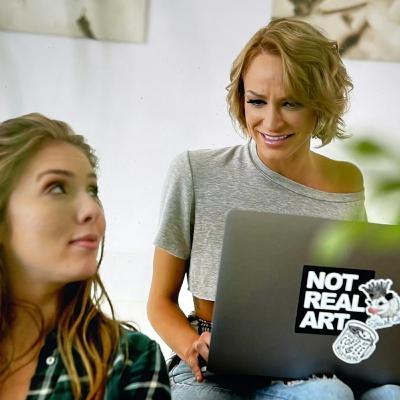
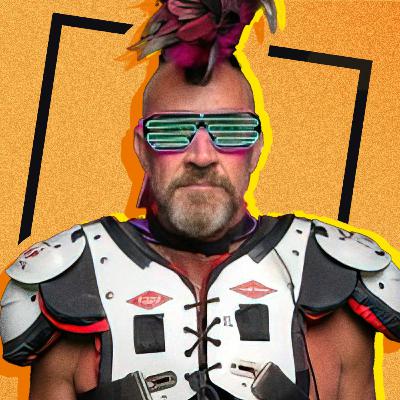

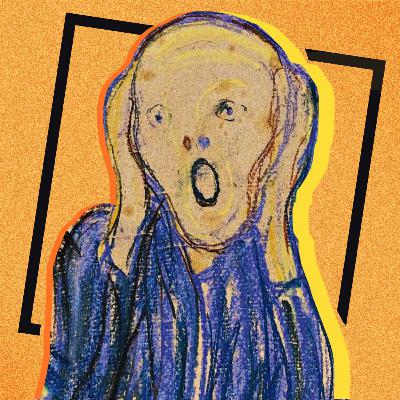
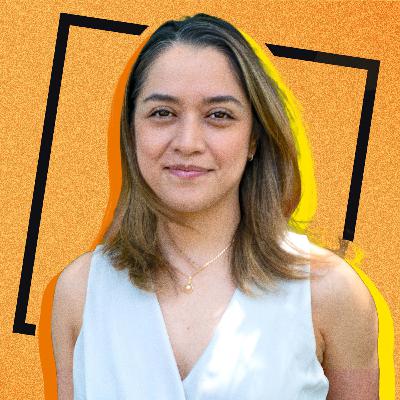
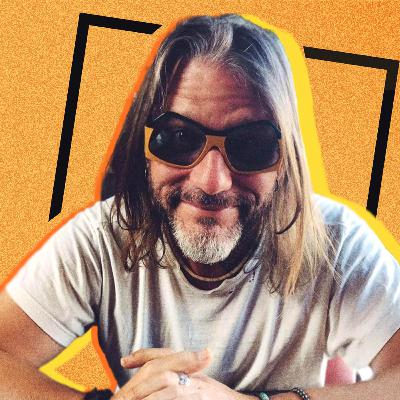

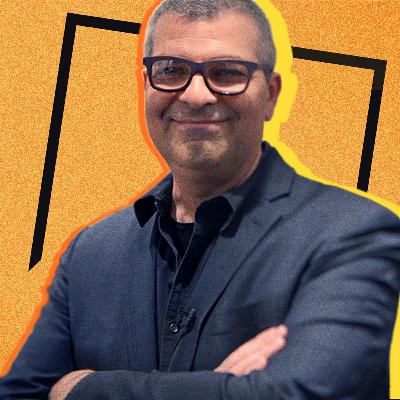

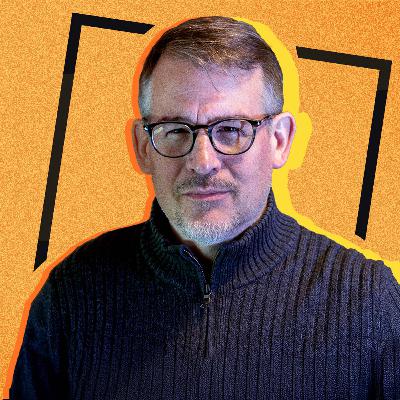


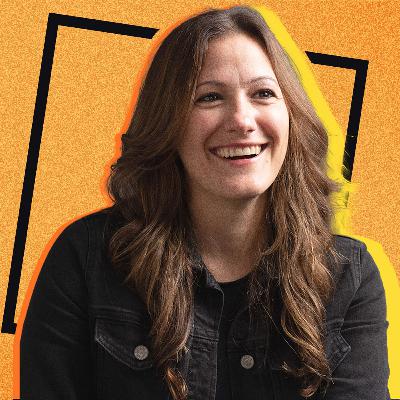
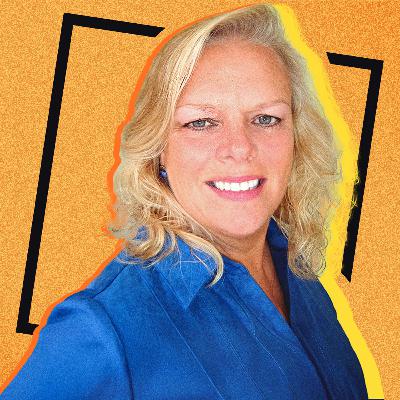
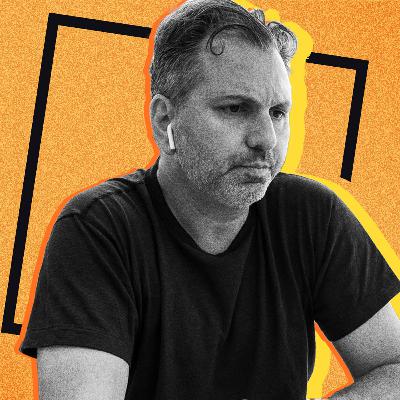



Whether you love art, or just don't realize you do, this is a great podcast! Sourdough has an uncanny ability to break down the pretentious barriers so often associated with art. We get a sense of the humans behind the magic and art is so much the story behind the work as it is the skill on display. A diverse set of characters and topics that cover a wide variety of subjects with art being the thread that winds in and out of each episode. I highly recommend!